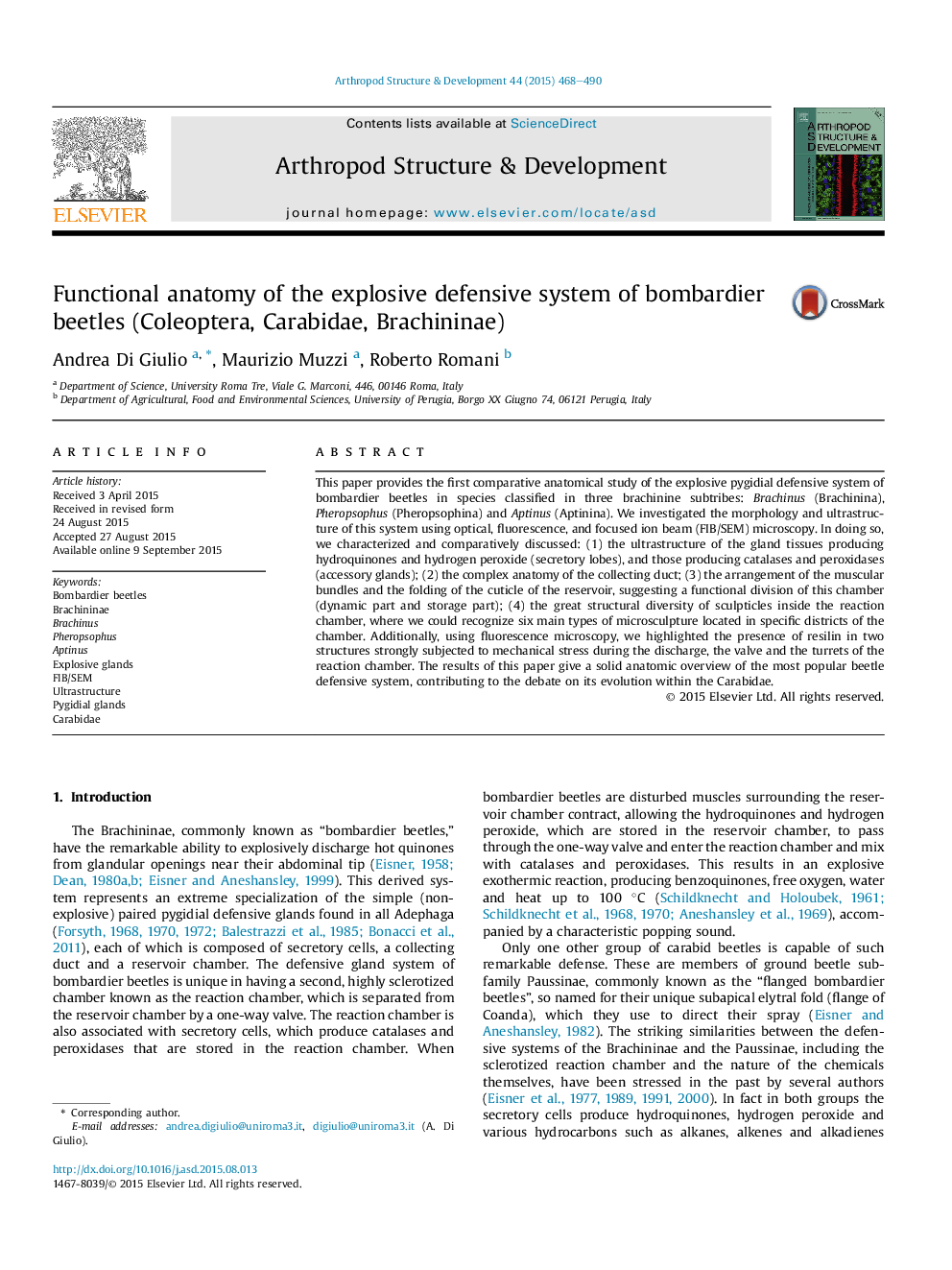| Article ID | Journal | Published Year | Pages | File Type |
|---|---|---|---|---|
| 2778541 | Arthropod Structure & Development | 2015 | 23 Pages |
•We analyze the defensive system in 8 species of Brachinus, Pheropsophus and Aptinus.•We use histology, fluorescence and focused ion beam/scanning electron microscopy.•We describe the anatomy and ultrastructure of Brachininae explosive defensive system.
This paper provides the first comparative anatomical study of the explosive pygidial defensive system of bombardier beetles in species classified in three brachinine subtribes: Brachinus (Brachinina), Pheropsophus (Pheropsophina) and Aptinus (Aptinina). We investigated the morphology and ultrastructure of this system using optical, fluorescence, and focused ion beam (FIB/SEM) microscopy. In doing so, we characterized and comparatively discussed: (1) the ultrastructure of the gland tissues producing hydroquinones and hydrogen peroxide (secretory lobes), and those producing catalases and peroxidases (accessory glands); (2) the complex anatomy of the collecting duct; (3) the arrangement of the muscular bundles and the folding of the cuticle of the reservoir, suggesting a functional division of this chamber (dynamic part and storage part); (4) the great structural diversity of sculpticles inside the reaction chamber, where we could recognize six main types of microsculpture located in specific districts of the chamber. Additionally, using fluorescence microscopy, we highlighted the presence of resilin in two structures strongly subjected to mechanical stress during the discharge, the valve and the turrets of the reaction chamber. The results of this paper give a solid anatomic overview of the most popular beetle defensive system, contributing to the debate on its evolution within the Carabidae.
Graphical abstractFigure optionsDownload full-size imageDownload as PowerPoint slide
